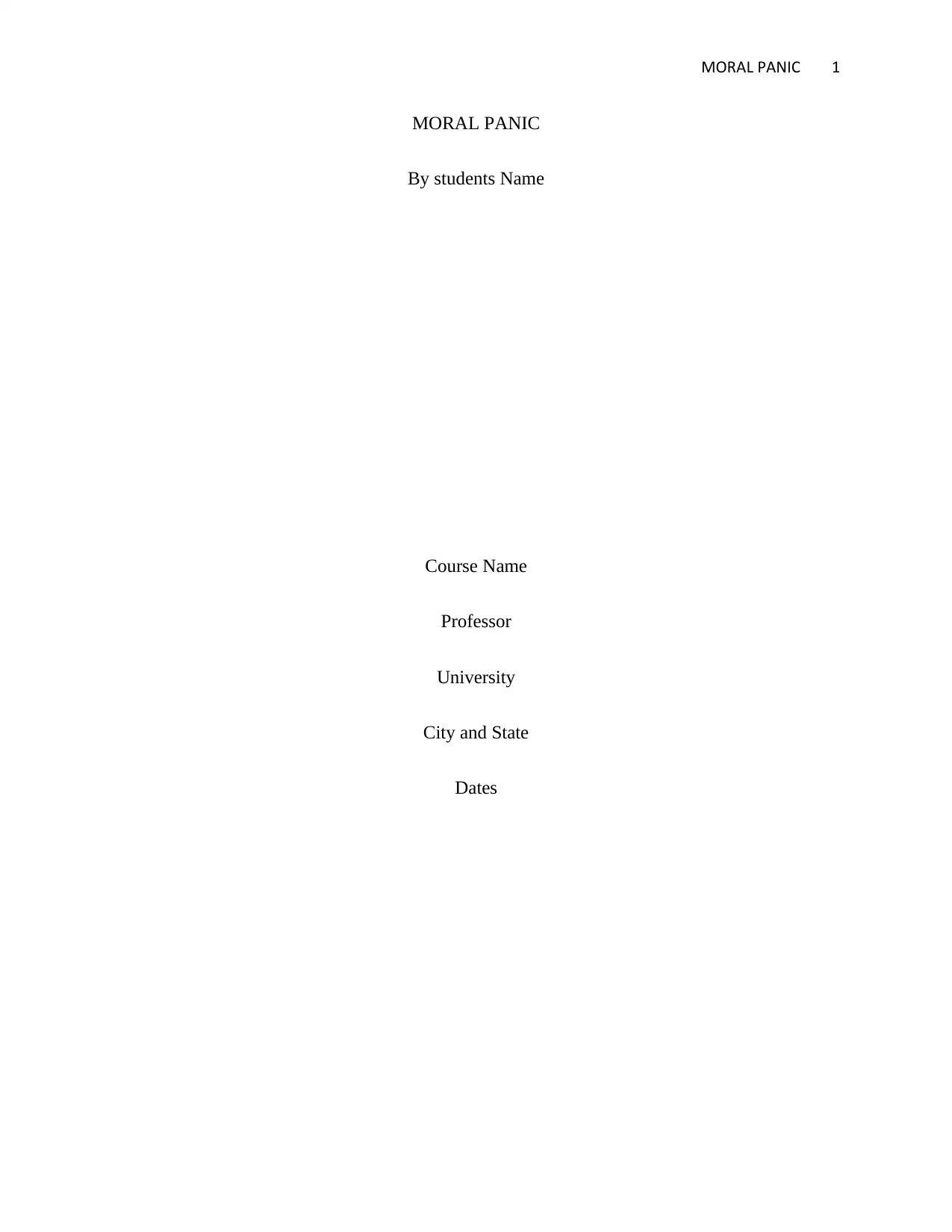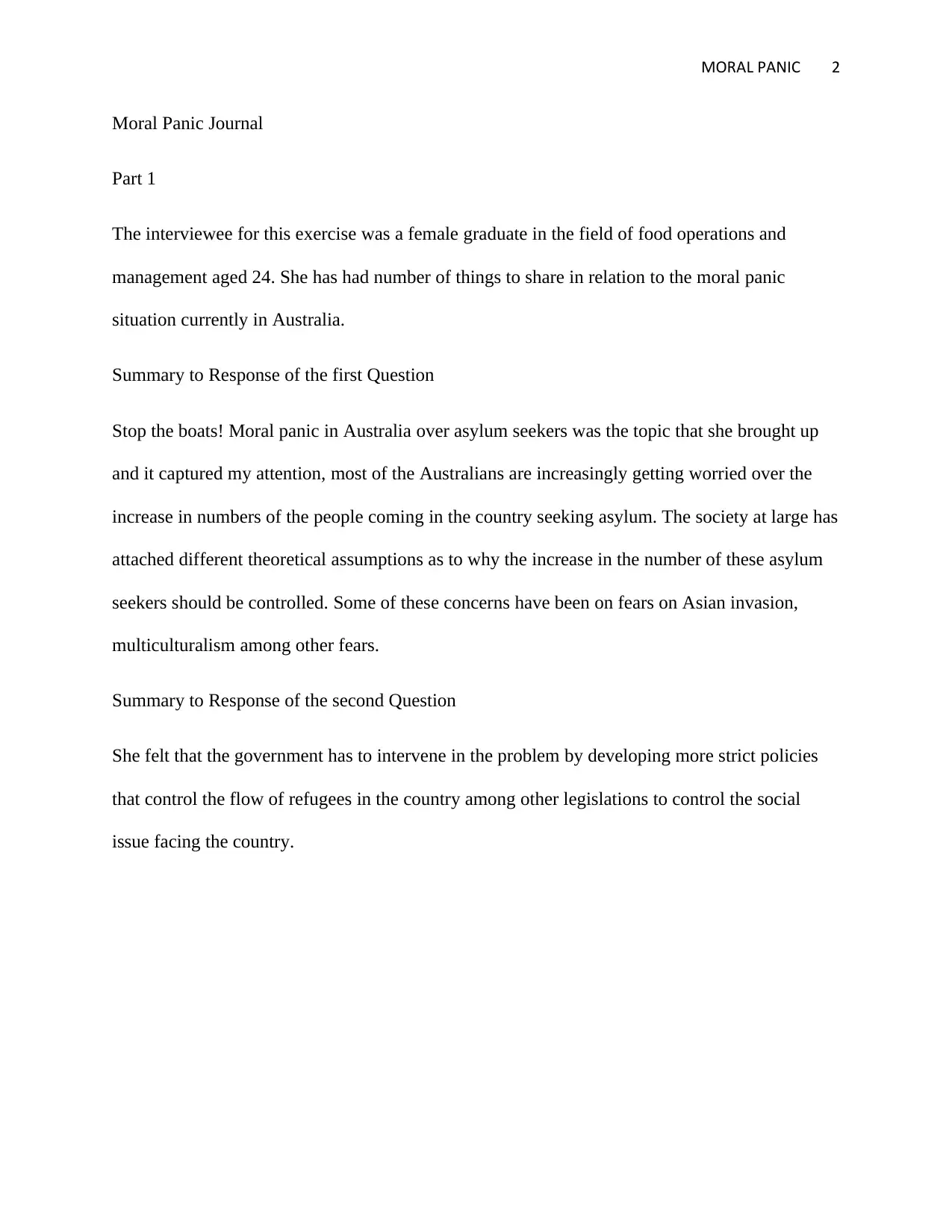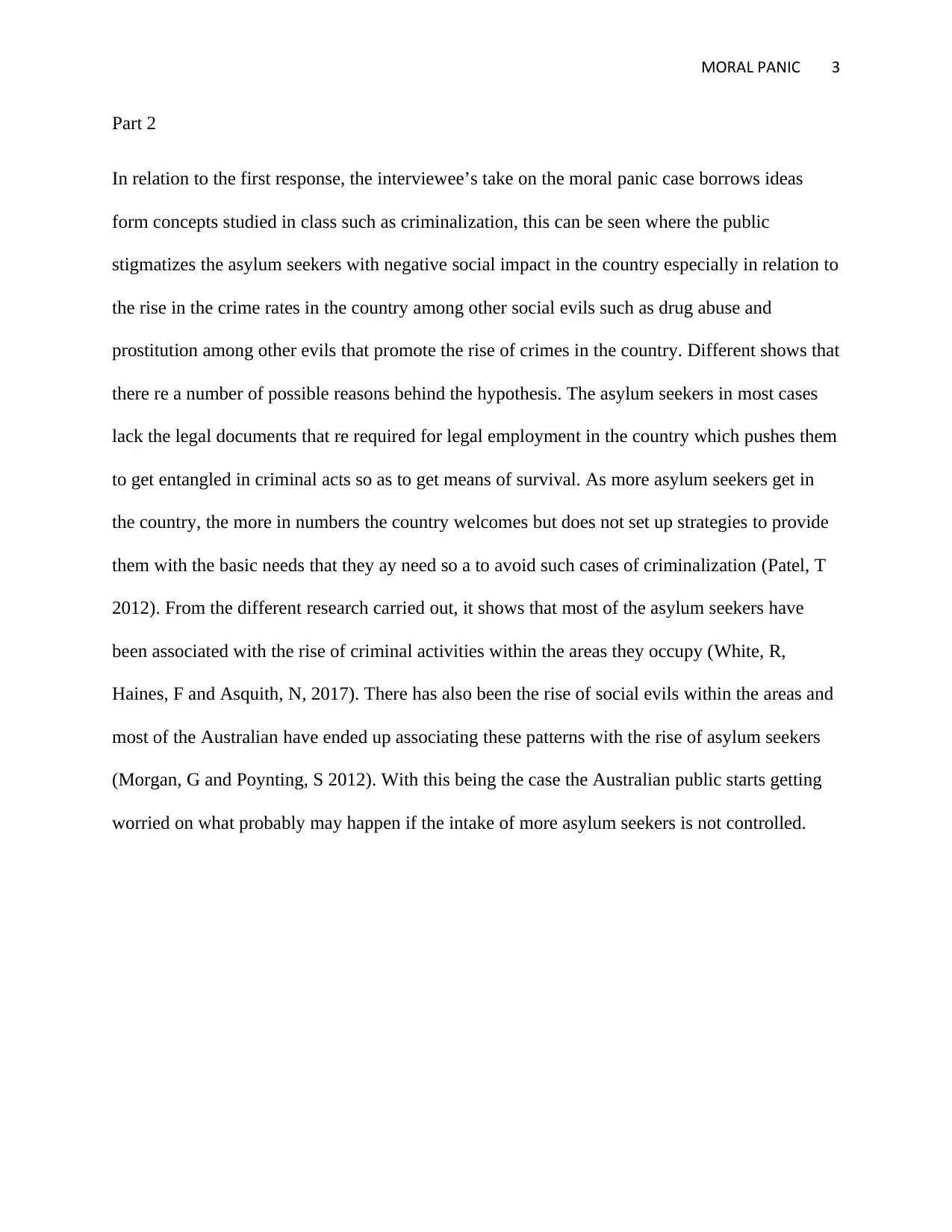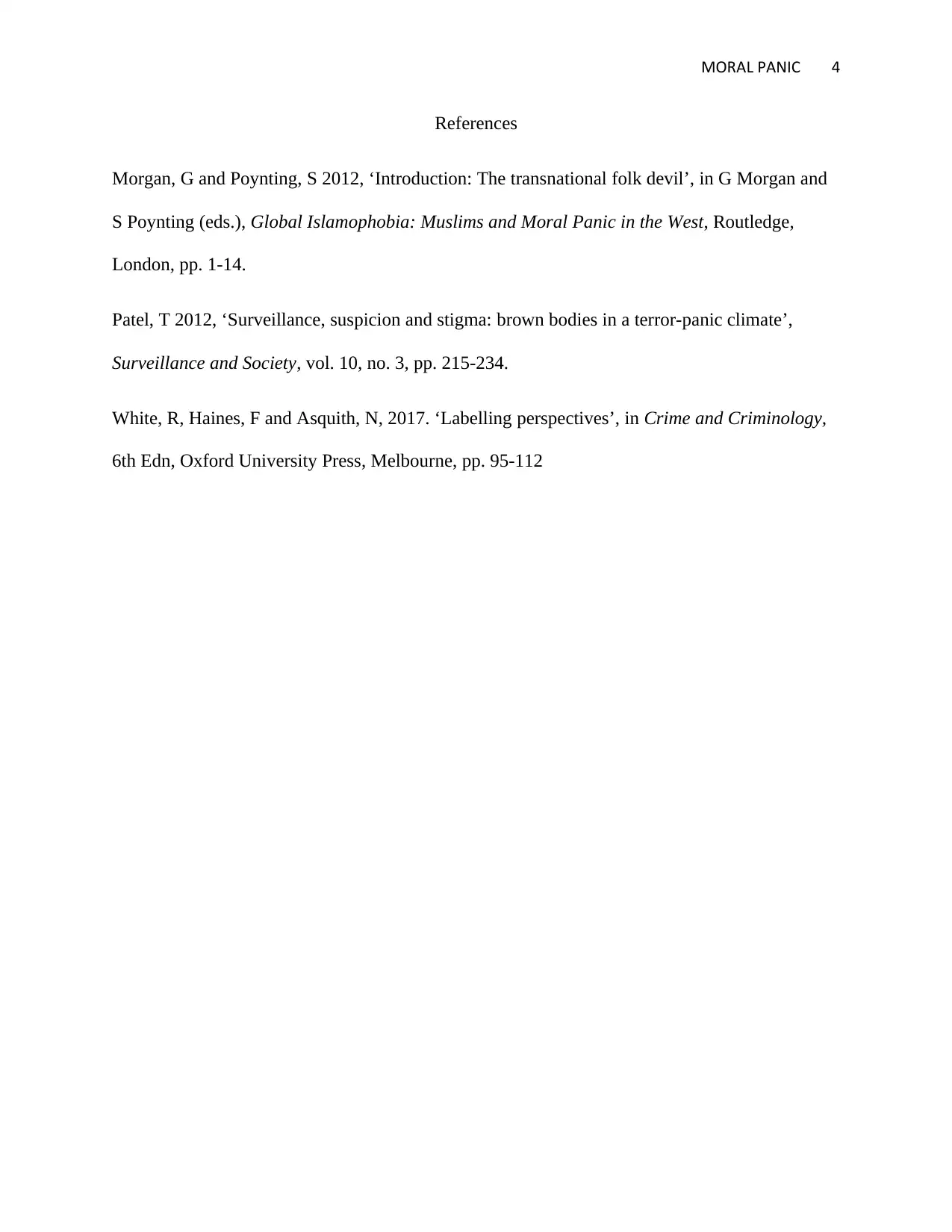Analyzing Moral Panic: Australian Perspectives on Asylum Seekers
VerifiedAdded on 2023/06/05
|4
|624
|308
Journal and Reflective Writing
AI Summary
This assignment delves into the concept of moral panic in Australia, specifically focusing on the anxieties surrounding the increasing number of asylum seekers. It presents an interview with a graduate in food operations and management who shares her perspectives on the issue, highlighting concerns related to Asian invasion, multiculturalism, and the perceived rise in crime rates. The interviewee suggests that government intervention is necessary through stricter policies to control the flow of refugees. The assignment connects these concerns to criminological concepts such as criminalization, where asylum seekers are stigmatized and associated with negative social impacts due to their lack of legal employment opportunities and the strain on resources. The analysis also references research indicating a correlation between asylum seeker populations and increased criminal activities and social problems, fueling public worries and the desire for stricter immigration controls. Desklib provides past papers and solved assignments for students.
1 out of 4





![[object Object]](/_next/static/media/star-bottom.7253800d.svg)